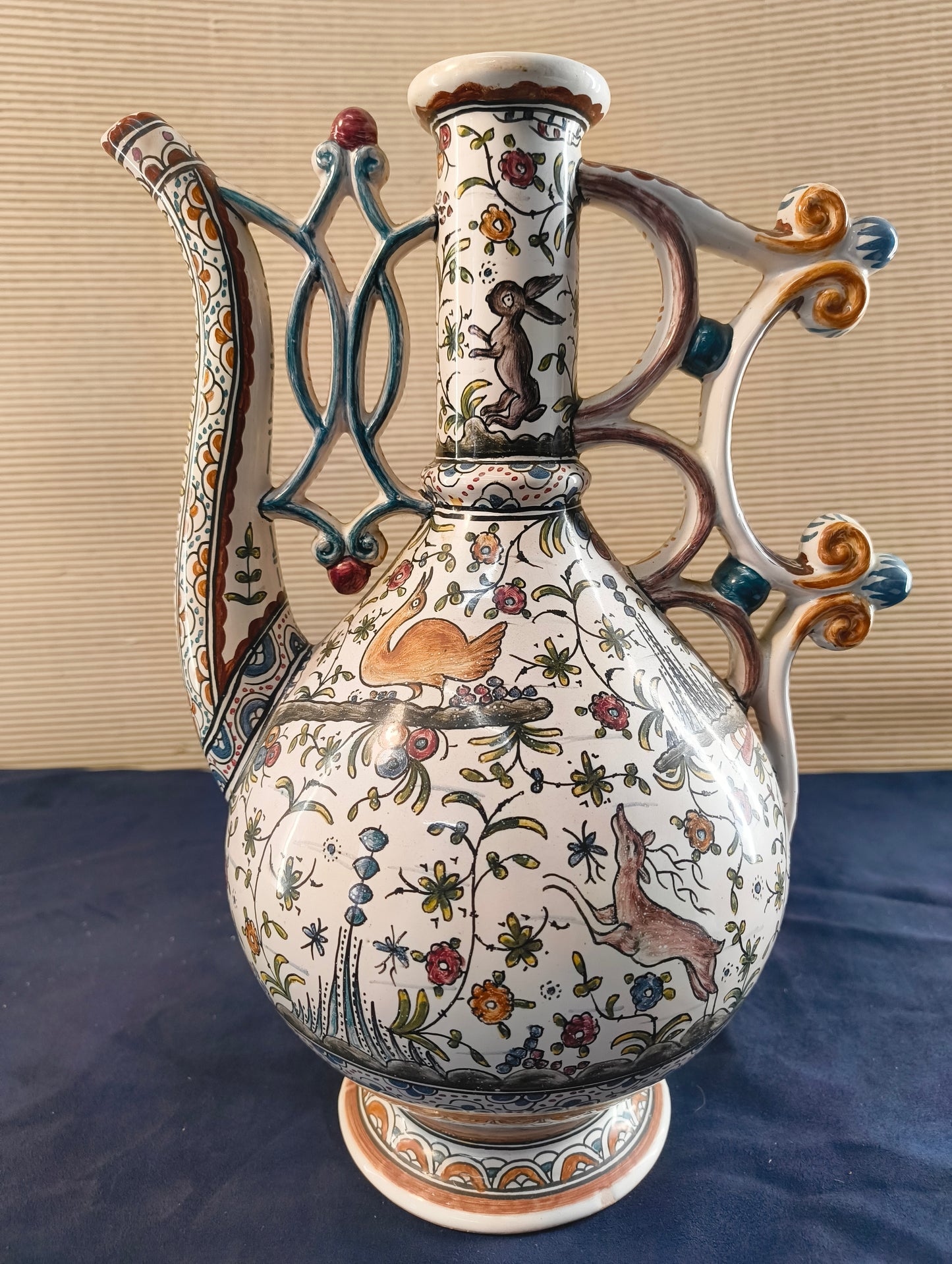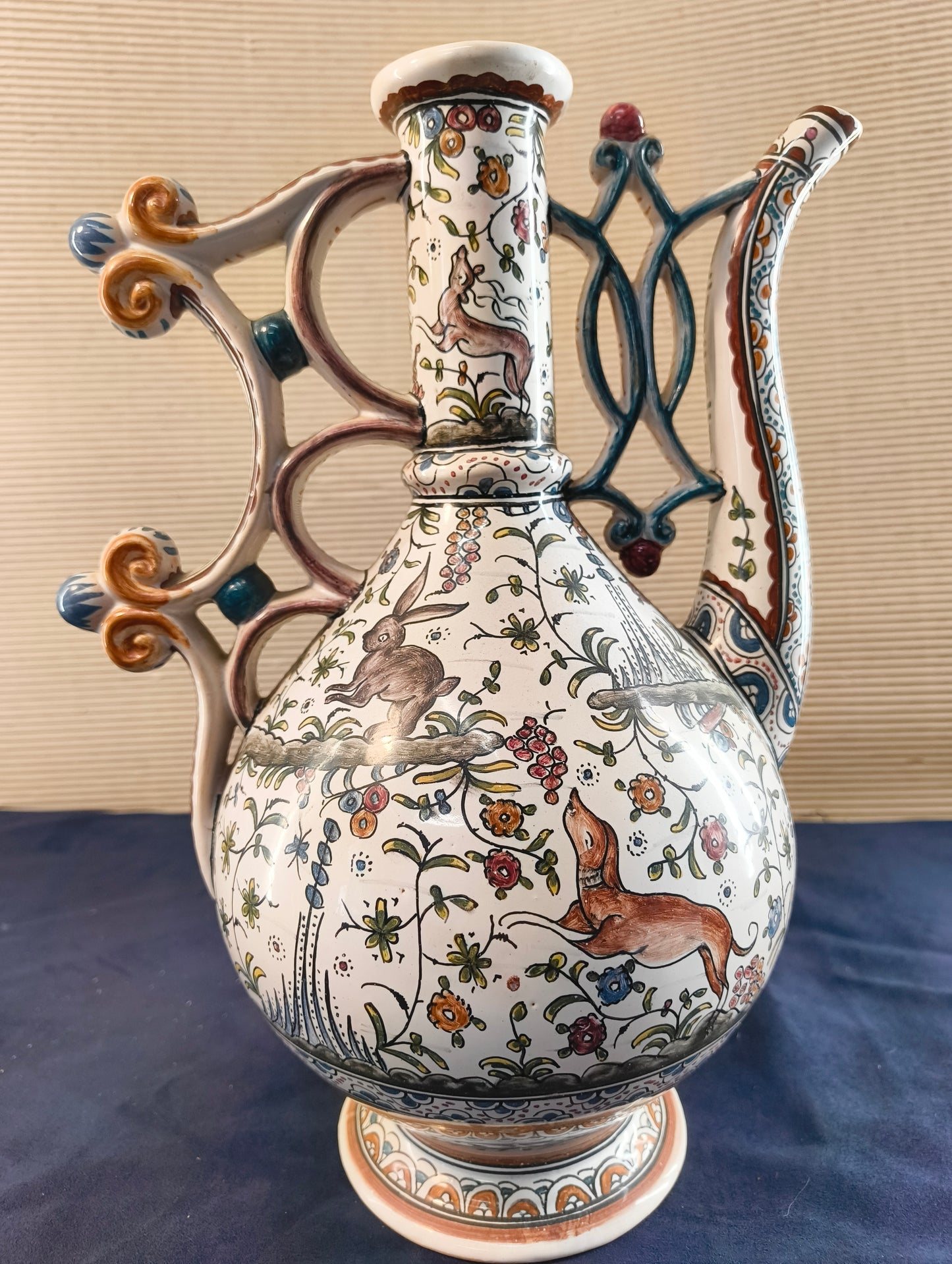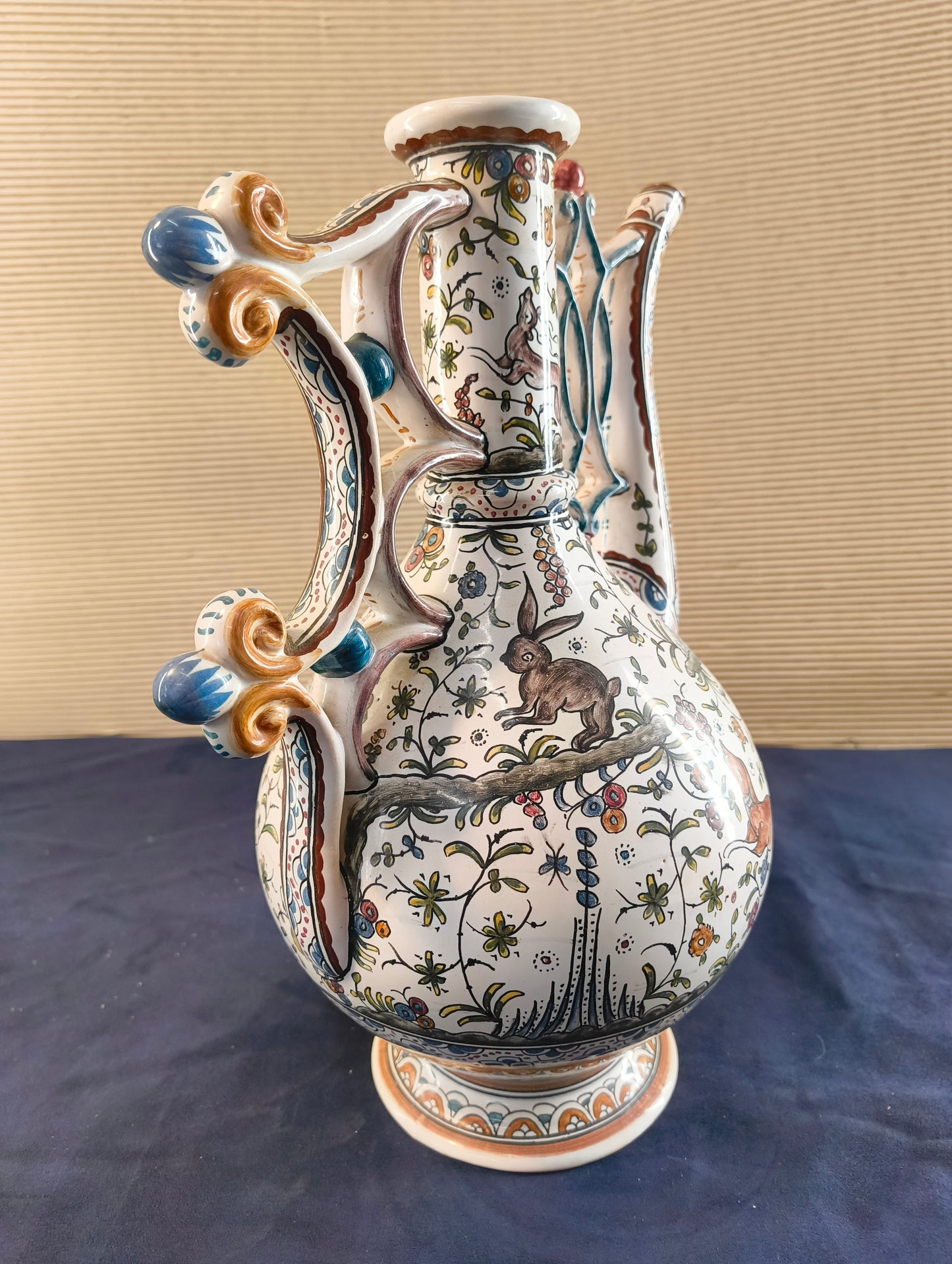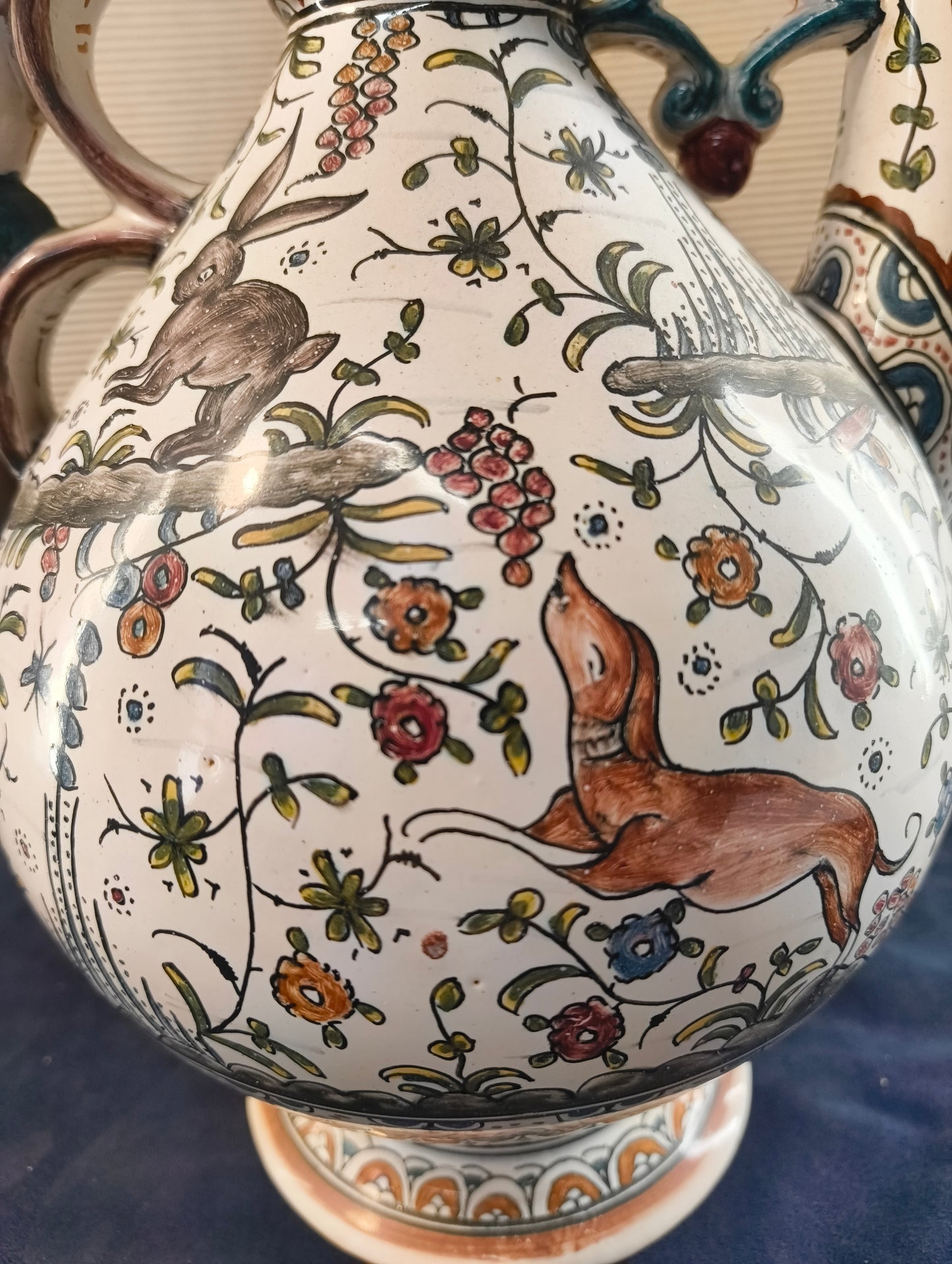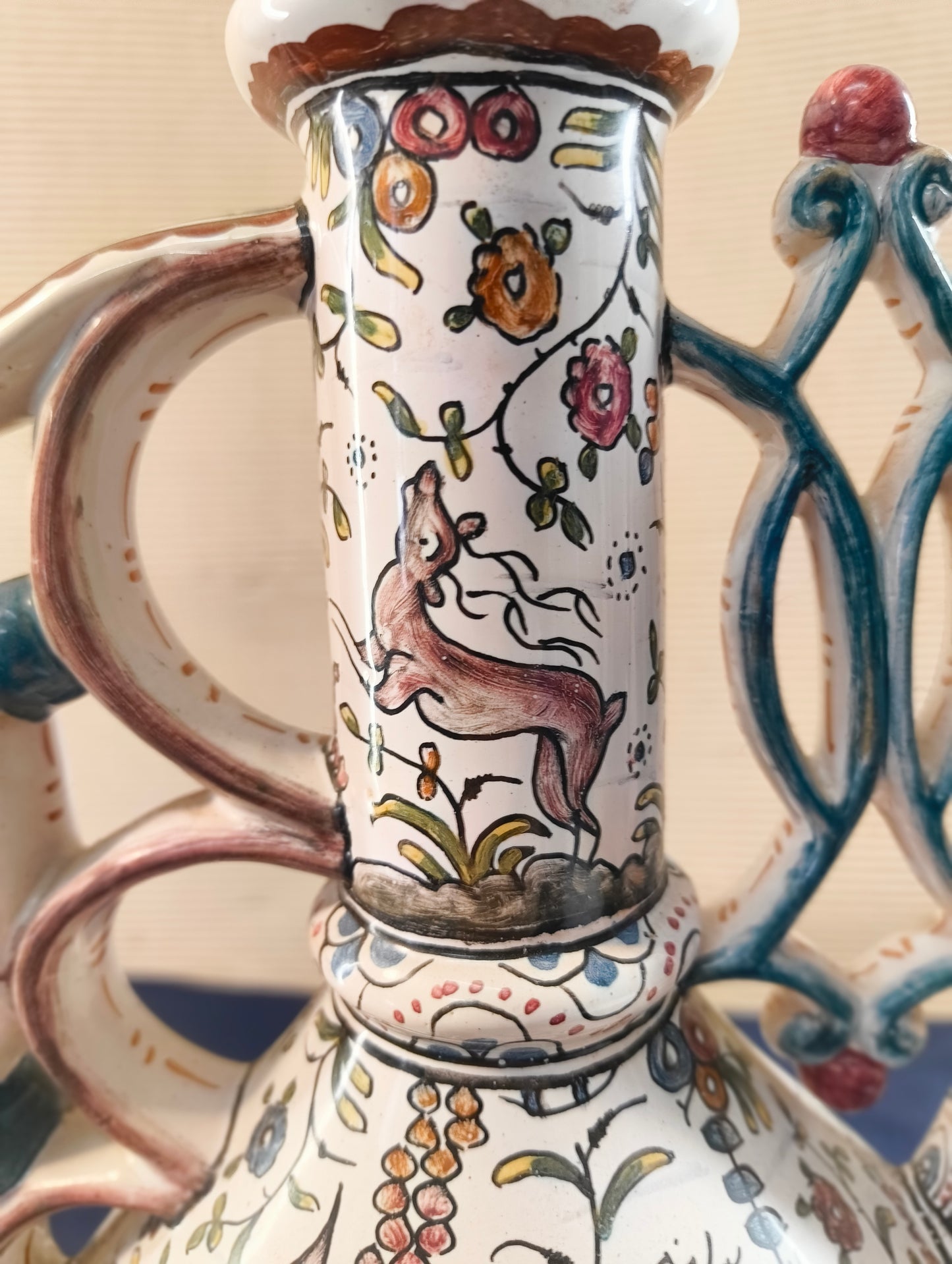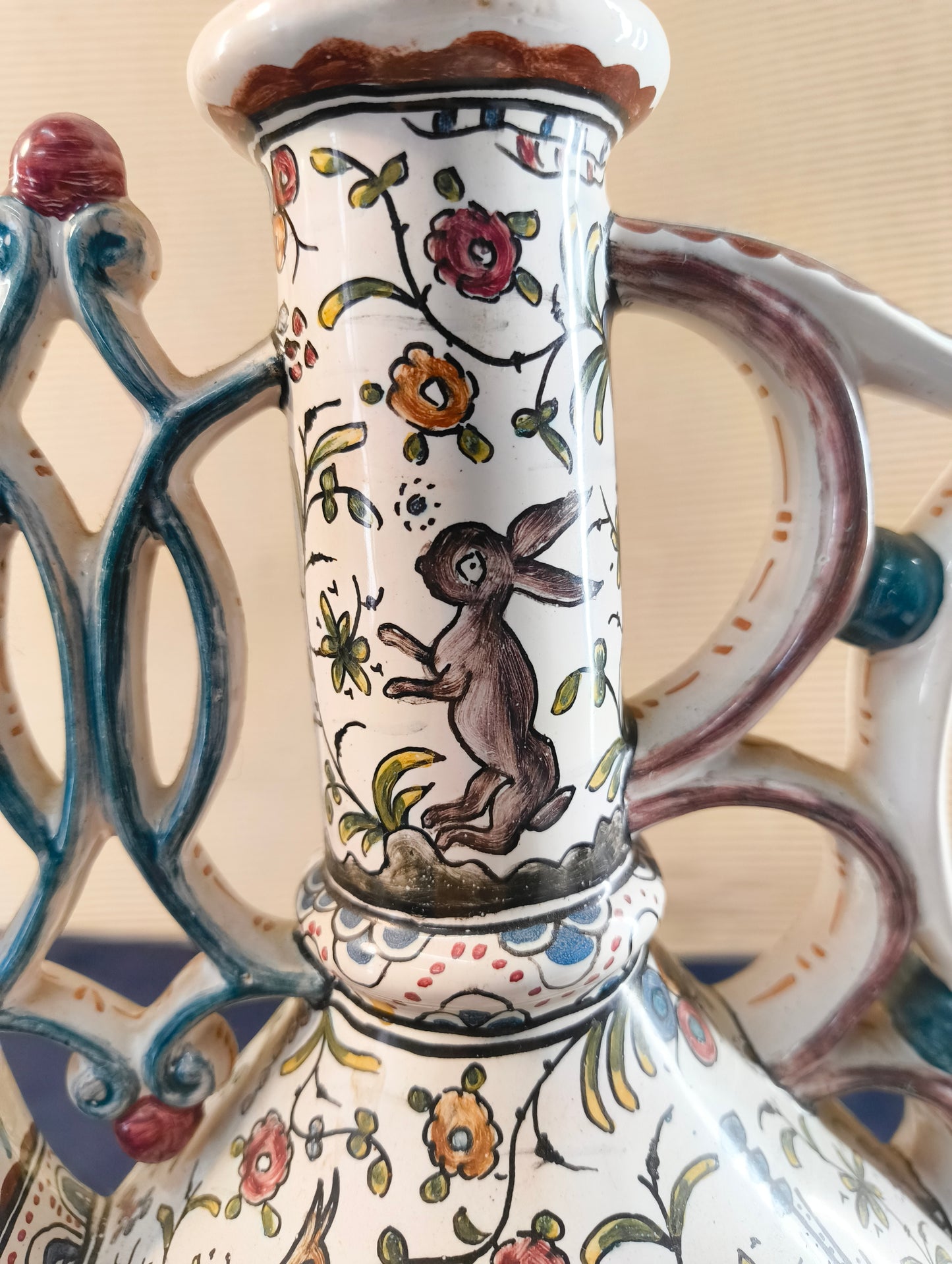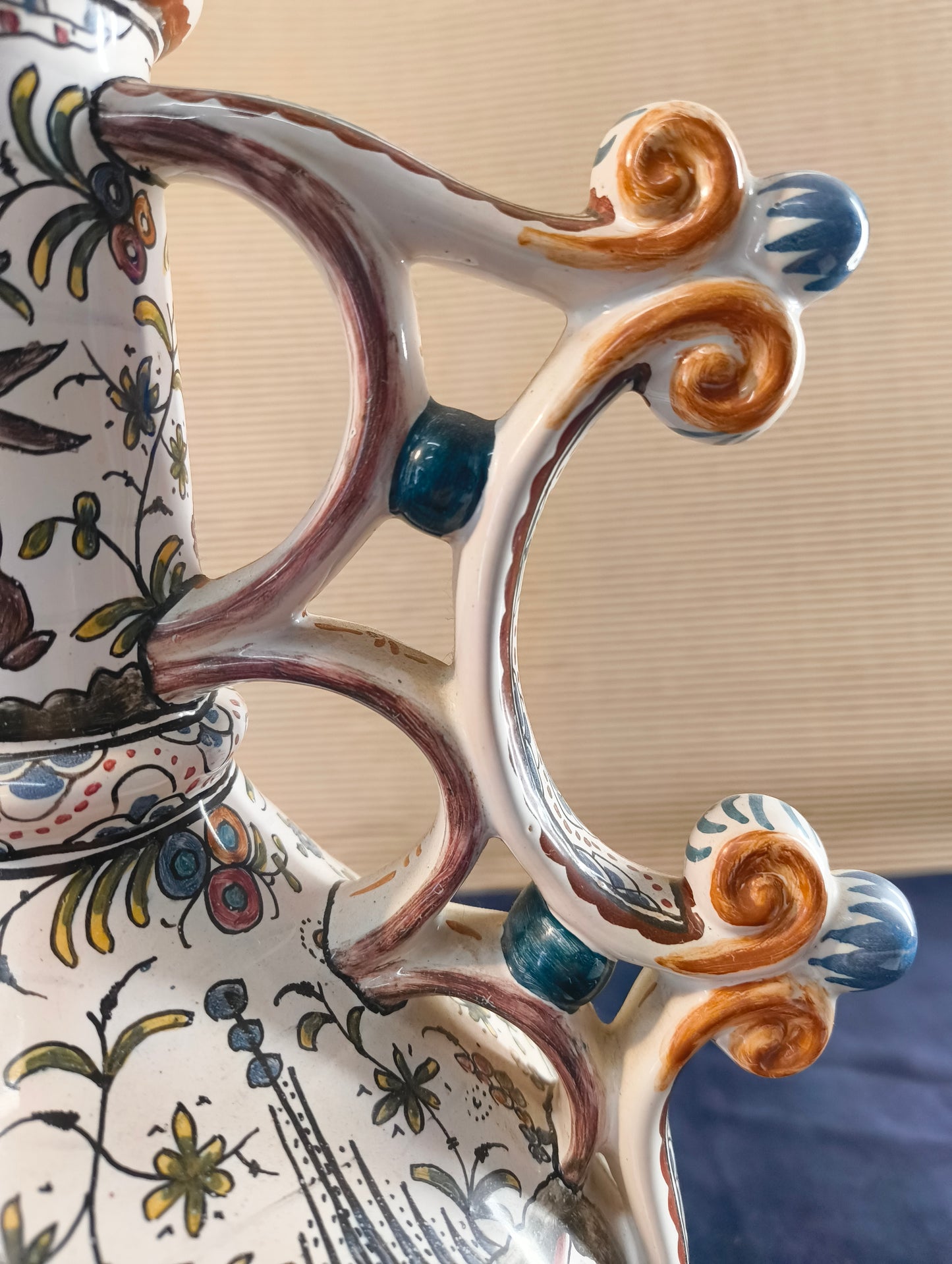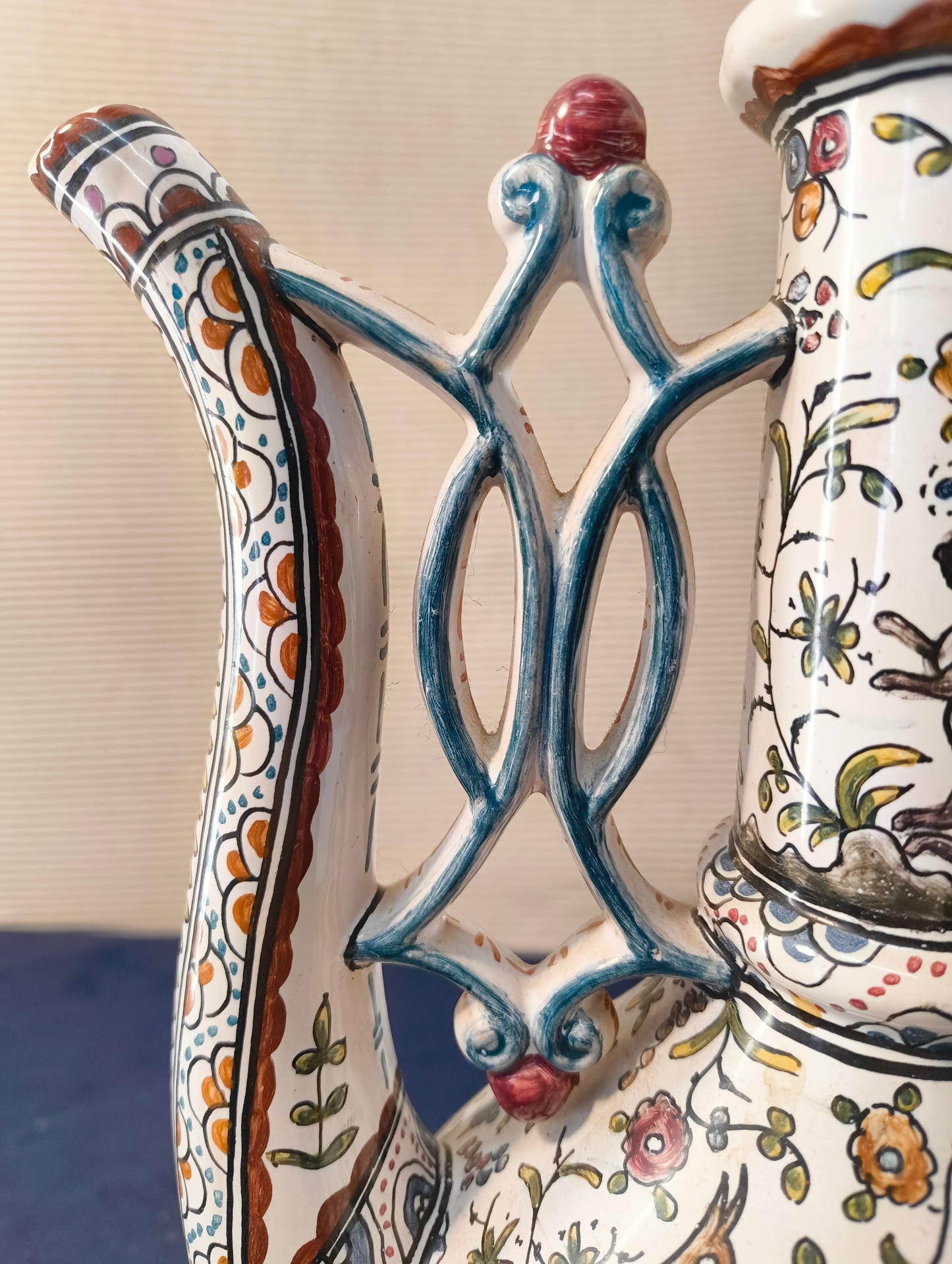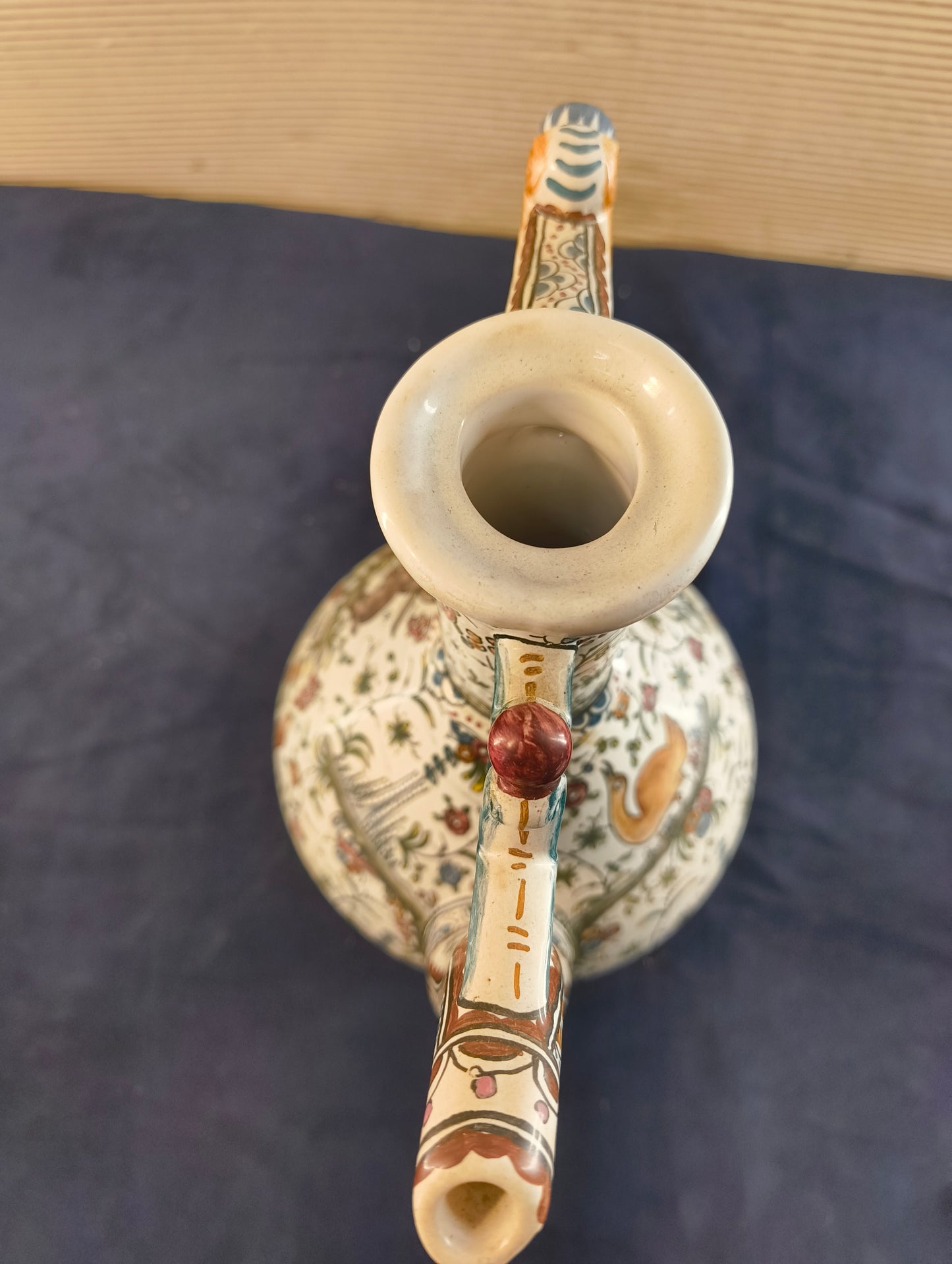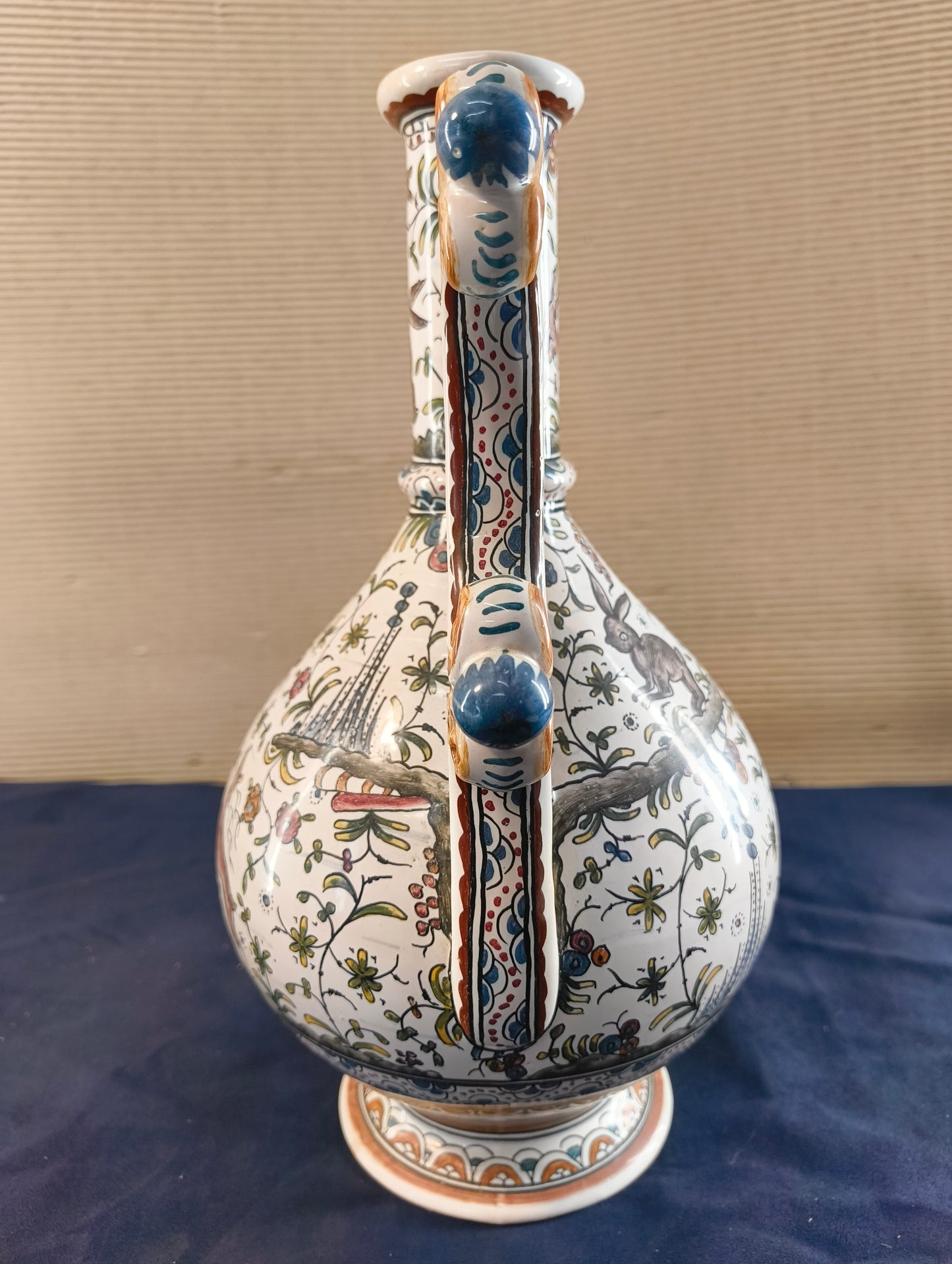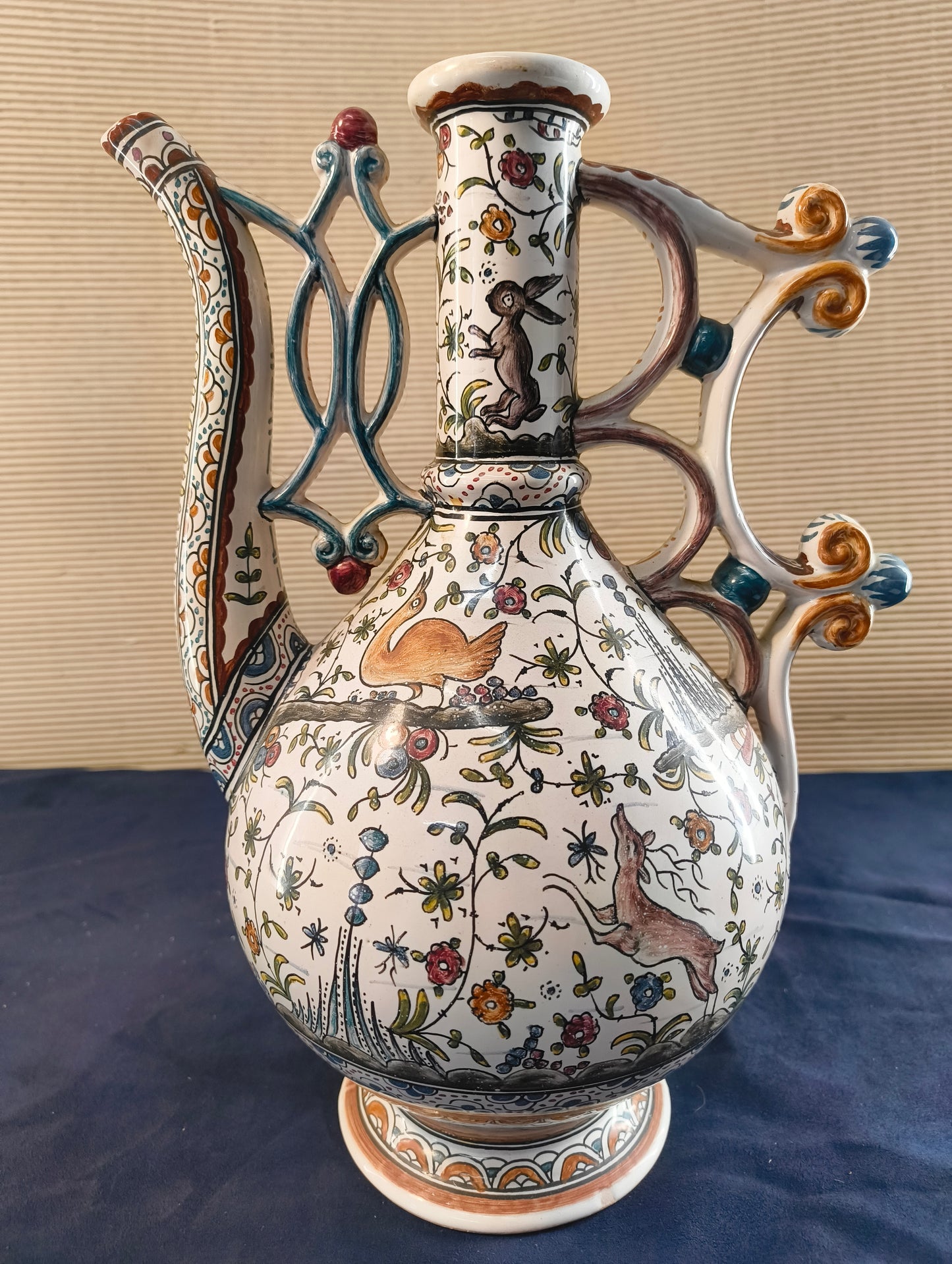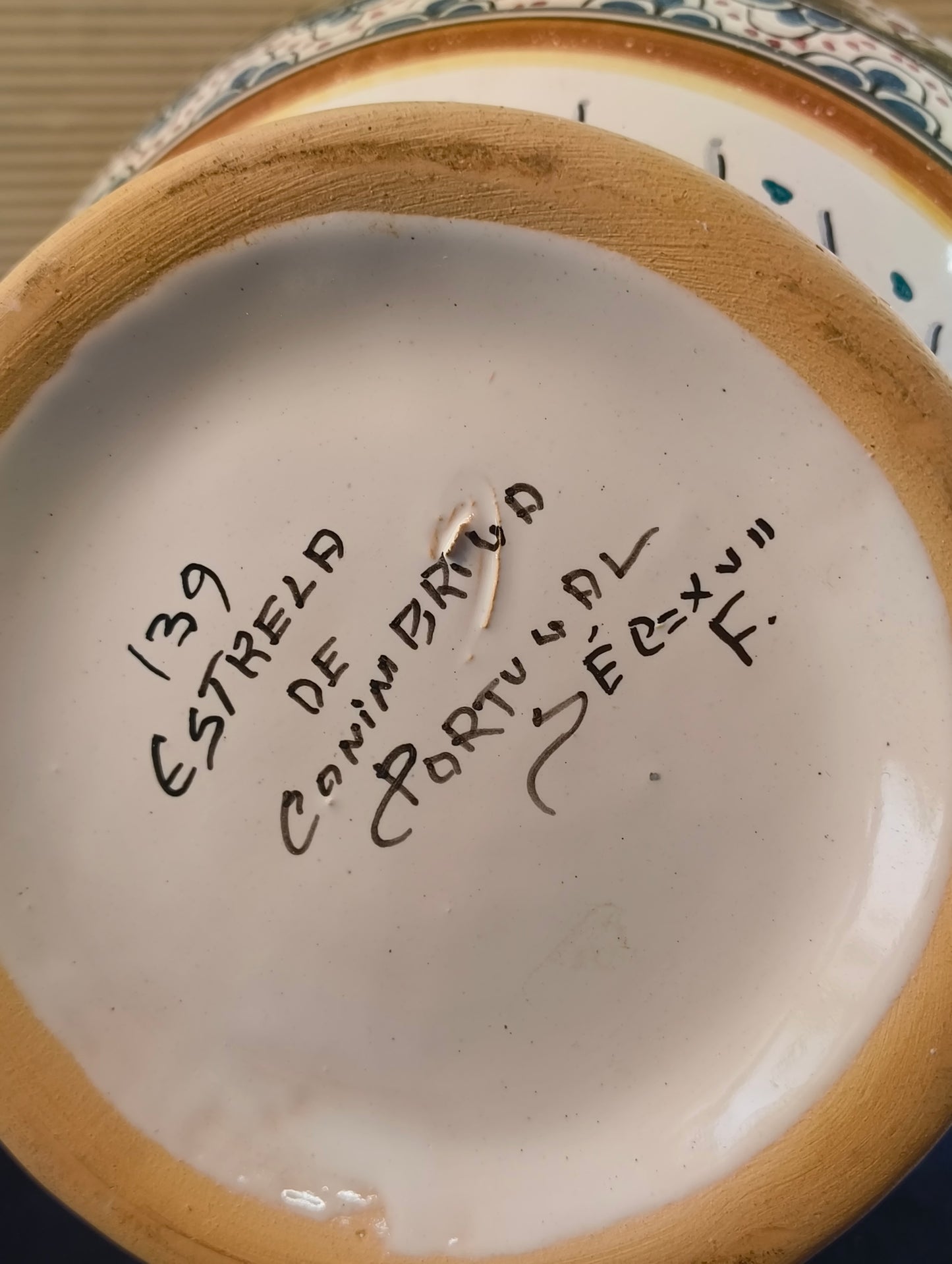Wunderkammer
Ceramic jug “Estrela de Conimbriga” Portugal - Copy of a 17th century model.
Ceramic jug “Estrela de Conimbriga” Portugal - Copy of a 17th century model.
Couldn't load pickup availability
Important, "rare and out of production", ceramic jug from the company “Estrela de Conimbriga” Portugal - Copy of a 17th century model and decoration, from 1980/1985
Size: Height 32.5 x base 17.5 x depth 24 cm. Weight 1230 gr.
We report from the company website:
The history of the influence of the East on the genesis of 16th-17th century faience is closely linked to the discovery of the sea route to India, from where Vasco da Gama, on his first voyage of exploration in 1498, brought Chinese porcelain to King Manuel. On his second voyage, Pedro Álvares Cabral brought new porcelain for the king. This was the beginning of the formation of a taste. Later, it was a Portuguese governor of Malacca, Pedro de Faria, who ordered from China a bowl with his name and the date 1541 engraved in Portuguese. The bowl by the Chinese ceramist Pedro de Faria is marked with the nien-Ho mark of the 16th century. 15th, undoubtedly to escape the imperial decree prohibiting its export. However, smuggling was considerable, until Macao became an important export center towards the end of the Ming dynasty (Sir Harry Farner, Oriental Blue and White).
The history of the influence of the East on the genesis of 16th-17th century faience is closely linked to the discovery of the sea route to India, from where Vasco da Gama, on his first voyage of exploration in 1498, brought Chinese porcelain to King Manuel. On his second voyage, Pedro Álvares Cabral brought new porcelain for the king. This was the beginning of the formation of a taste. Later, it was a Portuguese governor of Malacca, Pedro de Faria, who ordered from China a bowl with his name and the date 1541 engraved in Portuguese. The bowl by the Chinese ceramist Pedro de Faria is marked with the nien-Ho mark of the 16th century. 15th, undoubtedly to escape the imperial decree prohibiting its export. However, smuggling was considerable, until Macao became an important export center towards the end of the Ming dynasty (Sir Harry Farner, Oriental Blue and White).
Later, in 1619, during the visit to Portugal of Philip III of Spain, who was received with festive bows, the arch of the Portuguese ceramists, decorated with the emblems of their respective arts, is described by the chronicler Lavanha as bearing, among other symbols of the craft, a potter's wheel and a porcelain vase made in Lisbon, counterfeit from China, and at the bottom the following verses:
Here the exalted sovereign monarch
offers you the art of pilgrimage
made in the Lusitanian kingdom,
what China once sold us at a high price.
Share
